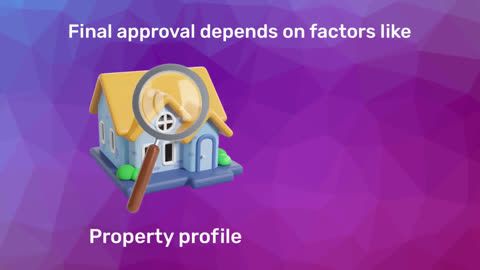What is stamp duty on loan agreement?
Stamp duty is a tax levied on legal documents by the state government, making the document legally valid and enforceable. In the context of loans, especially home loans, stamp duty on loan agreements is a significant fee that borrowers must bear. This charge varies depending on the state where the agreement is executed, as different states have different rates and regulations.The stamp duty paid on a loan agreement is typically a percentage of the loan amount or a fixed amount, depending on the state’s laws.
Why is stamp duty important?
1. Legal validity: A loan agreement without appropriate stamp duty is not legally enforceable in a court of law. Ensuring the correct stamp duty is paid protects both the lender and borrower in case of any disputes.2. State revenue: Stamp duty is an important source of revenue for state governments. It ensures that transactions are transparent and legally documented, reducing the risk of fraudulent activities.
3. Loan disbursement: Lenders often require proof that stamp duty has been paid before disbursing a loan. Ensuring your documents are properly stamped speeds up the disbursement process.
Who is eligible for a stamp duty refund?
Stamp duty is a mandatory charge levied by the government on various legal documents, including loan agreements, property transactions, and more. However, there are circumstances where you may be eligible for a stamp duty refund. Eligibility is usually defined by state-specific rules, and common scenarios where a refund may apply include:1. Cancellation of agreement: If a property sale or loan agreement is cancelled before it is executed or within a specified period, you may be eligible for a stamp duty refund.
2. Non-execution of document: If a stamped document remains unsigned or unexecuted, a refund is generally applicable.
3. Errors in stamping: Overpayment or incorrect stamping due to calculation errors or choosing the wrong stamp duty category can make you eligible for a refund.
4. Double payment: If stamp duty is paid twice due to clerical errors or other mistakes, you can claim a refund for the excess amount.
5. Non-utilised documents: In cases where stamped documents are not utilized within a specified time frame, a refund can be claimed for the unused documents.
Different states have varying rules and procedures, so it’s important to verify the specific eligibility criteria in your region.
How can I apply for a stamp duty refund?
Applying for a stamp duty refund involves a systematic process. Follow these steps to ensure your refund claim is valid:1. Submit an application: File the refund application with the appropriate sub-registrar’s office or revenue department in your state.
2. Attach necessary documents: Provide all required documents like original stamped documents, proof of payment, and cancellation evidence.
3. Verification and review: Authorities will review the application and supporting documents to verify the validity of your claim.
4. Approval and disbursement: Upon successful verification, your refund will be approved, and the amount will be disbursed to your bank account.
What documents are needed for stamp duty refund?
To ensure your refund process goes smoothly, prepare the following documents:1. Original stamped document: The original document for which the stamp duty was paid.
2. Proof of cancellation: Evidence that the transaction was canceled, such as a cancellation agreement or a letter from both parties.
3. Payment receipt: The original payment receipt showing the stamp duty amount paid.
4. Application form: A completed application form as per the format prescribed by the state government.
5. Identity proof: Government-issued identity proof of the applicant.
Additional read: Stamp duty and registration charges
How long does it take to process a stamp duty refund?
The processing time for a stamp duty refund varies depending on the state, complexity of the application, and other factors. On average, it can take anywhere between three to six months for the refund to be processed. The timeline involves various stages such as application review, verification, and approval from the revenue authorities.Factors like incomplete documentation or discrepancies in the application can lead to delays. To avoid such issues, it’s crucial to ensure that all required documents are in order and that the application is accurately filled out.
How to calculate stamp duty amount while taking a home loan
When securing a home loan, one of the essential considerations is the stamp duty that applies to the loan agreement. Stamp duty varies by state, but the amount is usually calculated based on the loan amount or a fixed percentage set by the state.Here’s a simple guide on calculating stamp duty while taking a home loan:
1. Determine loan amount: Identify the total loan amount sanctioned by the lender.
2. Check state-specific rates: Research the stamp duty rate applicable in your state. For example, in some states, the rate could be a flat percentage like 0.1% of the loan amount.
3. Include additional charges: Some states may also include charges for registration or other ancillary services that could affect the overall stamp duty cost.
4. Calculate the total cost: Multiply the loan amount by the applicable stamp duty rate to get an estimate of the total stamp duty payable.
How much stamp duty do you need to pay?
The amount of stamp duty on loan agreements varies across states. Below is a general overview of factors influencing the stamp duty rate:1. Loan amount: Higher loan amounts may attract higher stamp duty, depending on the state’s rules.
2. Location: Urban and rural areas within the same state might have different stamp duty rates.
3. Document type: Whether it's a mortgage deed, loan agreement, or hypothecation deed, each may attract different stamp duty rates.
To get precise information on the stamp duty applicable to your location and loan amount, it’s best to consult local regulations or seek guidance from your lender.
Additional read: Maharashtra Stamp Duty Abhay Yojana
Explore Bajaj Housing Finance Home Loan
If you are planning to purchase a property and need a home loan, Bajaj Housing Finance offers a range of tailored home loan solutions to meet your needs. With competitive interest rates, long repayment tenure, and quick disbursal, Bajaj Housing Finance can help you navigate the complexities of property transactions with ease.Here are a few reasons why you should choose Bajaj Housing Finance Home Loan:
1. Competitive interest rates: Bajaj Housing Finance offers some of the most competitive home loan interest rates in the market, ensuring that your home loan remains affordable throughout its tenure.
2. Flexible repayment options: With flexible repayment options, borrowers can choose a plan that best fits their financial situation, making it easier to manage monthly payments.
3. Quick and easy processing: The application process for a Bajaj Housing Finance Home Loan is streamlined and user-friendly, ensuring quick approval and disbursement.
Explore Bajaj Housing Finance Home Loan today and experience a seamless way to finance your dream home.




